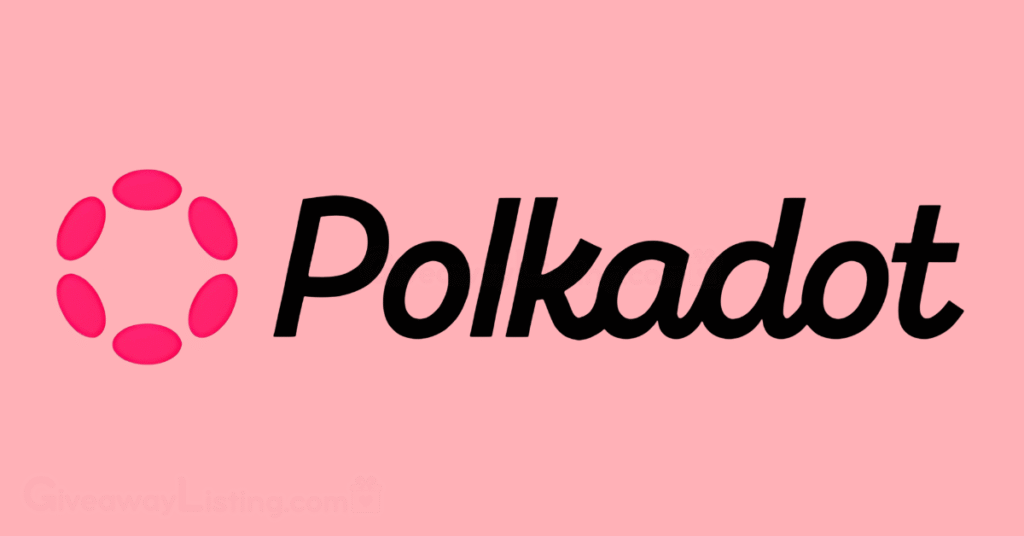What is Polkadot? DOT Explained – November 2025
Polkadot is a next-generation protocol designed to support a decentralized web. It connects multiple specialized blockchains into a single, unified network. Its native token, DOT, is integral to the network’s operation, governance, and security.
Polkadot addresses one of the most significant challenges in the blockchain space: interoperability. Most blockchains operate as isolated islands, unable to communicate with one another. Polkadot serves as a foundational “layer-0” protocol, establishing a framework that enables different blockchains, referred to as “parachains,” to connect and exchange information securely and without intermediaries.
This platform is used by developers and entire projects to build new, custom blockchains that are both scalable and interconnected from day one. It also enables established networks, such as Ethereum, to integrate into its ecosystem. This architecture creates a truly scalable and collaborative environment for decentralized applications.
Why is Polkadot Unique? DOT Features

Polkadot stands out with a design focused on connecting disparate systems and empowering its community. Its structure offers a novel approach to scalability, security, and governance. A key element of Polkadot’s design is its shared security model. The network consists of a central “Relay Chain” that provides security for all connected parachains. When a new project joins the network, it doesn’t need to build its security from the ground up; it simply plugs into Polkadot’s established security framework.
With over $5 billion in value staked to protect the network, this offers immense value and a significant head start for new applications. This allows developers to focus on their project’s unique features rather than worrying about attracting enough validators to secure their chain. Furthermore, “bridges” are being developed to connect the Polkadot ecosystem to external blockchains, allowing for the transfer of any type of data or asset across networks.
Polkadot’s architecture is built for speed and efficiency. By processing transactions in parallel across its many parachains, the network can handle a much higher workload than single-chain designs. Polkadot can process over 1,000 transactions per second, with limits claimed to reach as high as 623,000 TPS.
Another significant advantage is its ability to perform “forkless” upgrades. This means the network can be updated and improved without creating a hard fork, a disruptive event that can split a blockchain’s community.
The DOT token is the lifeblood of the Polkadot network, providing utility beyond simple value transfer. It powers an on-chain governance system where all token holders have a voice. With more than 1.3 million DAO members, Polkadot’s direction is determined by its community, not a small group of developers. The DOT token serves three primary functions:
- Governance: DOT holders can propose and vote on network changes, treasury spending, and the overall evolution of the protocol.
- Staking: Users can lock up their DOT to help secure the network. In return for this service, they receive staking rewards.
- Bonding: To connect a new parachain to the network, a project must “bond” or lock up a certain amount of DOT for the duration of its lease, a process often supported by the community through crowdloans.
This combination of seamless cross-chain communication, shared security, high scalability, and a truly decentralized governance model makes Polkadot a powerful foundation for the next generation of the web.
Polkadot History, Facts & Statistics

The concept for Polkadot was first outlined in a 2016 whitepaper by Dr. Gavin Wood, a co-founder of Ethereum and the creator of Solidity, the programming language used for Ethereum’s smart contracts. Wood envisioned a network that could overcome the scalability and isolation issues that plagued earlier blockchains.
To bring this idea to life, he co-founded the Web3 Foundation and Parity Technologies. The project successfully held an Initial Coin Offering (ICO) in October 2017, raising approximately $140 million. However, the project faced an early challenge when a vulnerability in a Parity wallet led to a significant portion of the ICO funds being permanently frozen.
Despite this setback, development continued. The project launched its canary network, Kusama, in 2019 as a live testing ground. The first phase of the Polkadot mainnet went live in May 2020. The network’s native token, DOT, became transferable in August 2020 after a community vote led to a redenomination, increasing the total supply from 10 million to 1 billion to make the token more manageable. Parachain auctions commenced in late 2021, enabling projects to connect to the network and commence operations within its ecosystem.
Polkadot Key Facts & Statistics
- Polkadot was founded by Dr. Gavin Wood, a co-founder of Ethereum, along with Robert Habermeier and Peter Czaban.
- The Polkadot whitepaper was published in October 2016, with the mainnet launching in May 2020.
- The network’s native token is DOT, which is used for governance, staking to secure the network, and bonding to connect parachains.
- The DOT token supply was redenominated in August 2020, changing the total supply to 1 billion. The total supply is now nearly 1.5 billion DOT.
- Polkadot’s architecture features a central Relay Chain that provides security for up to 100 connected blockchains called parachains.
- The Polkadot network can process over 1,000 transactions per second, with future upgrades aiming for speeds of up to 623,000 TPS.
- The Polkadot DAO represents over 1.3 million members through on-chain wallets, making it one of the largest in Web3.
- More than 600 projects are actively building within the Polkadot ecosystem, covering areas like DeFi, gaming, and real-world asset tokenization.
- Kusama (KSM) is Polkadot’s “canary network,” an independent blockchain used for testing new features and projects in a real economic environment before deploying them on Polkadot.
- In 2022, Polkadot launched XCM (Cross-Consensus Message Format), a standardized messaging system that enables parachains to communicate with each other.
- The network is secured using a Nominated Proof-of-Stake (NPoS) consensus mechanism.
- DOT reached an all-time high of $54.98 in November 2021.
DOT is a volatile asset, and like other digital currencies, it is susceptible to significant fluctuations in value and market uncertainties.
DOT Price Predictions. Is Polkadot Going to Crash or Moon in 2025?

Digital currencies are known for their price volatility, and Polkadot’s native token, DOT, is no exception. The value of DOT can experience substantial swings in short periods, influenced by market sentiment, technological developments, and broader economic factors.
This volatility presents both opportunities and risks for market participants. Over the years, DOT has seen remarkable price movements, reaching an all-time high of nearly $55 during the late 2021 bull market. It has also experienced significant downturns, with its all-time low recorded at around $2.70.
These price records demonstrate the token’s potential for high returns, as well as its vulnerability to market corrections. Understanding the factors that drive these fluctuations is important for anyone considering adding DOT to their portfolio. The token’s price often reflects the progress and adoption of the entire Polkadot ecosystem, serving as a barometer for the network’s overall health and potential.
For 2025, price predictions from market analysts are mixed. Some analyses suggest a period of consolidation for DOT, with price predictions ranging between $3.50 and $4.50. This conservative outlook often considers the ongoing competition from other blockchain platforms and the potential for prolonged bearish market conditions. These forecasts suggest that while Polkadot’s technology is strong, its token price may struggle to gain significant momentum without a major market-wide catalyst.
On the other hand, more optimistic forecasts place DOT’s potential price much higher in 2025. Some analysts predict that a successful rollout of the Polkadot 2.0 upgrade and growing adoption of its Web3 capabilities could push the price towards the $8 to $10 range, or even higher.
These predictions are based on the network’s technical strengths and its potential to capture a larger share of the decentralized application market. For more in-depth analysis and trading insights, you can review this Polkadot price prediction, which looks at various technical indicators and future price targets.
Several key factors can contribute to the rise or fall of DOT’s value. A major one is the ongoing development and adoption of the Polkadot ecosystem. The successful implementation of Polkadot 2.0, which aims to make the network more flexible and developer-friendly, could attract more projects and users, increasing demand for DOT.
The network’s high transaction speeds and interoperability features also give it a competitive edge that could boost its adoption in sectors like DeFi and gaming. Conversely, the market is highly competitive, with platforms like Ethereum, Solana, and Cosmos all vying for dominance. If these competitors innovate faster or capture more market share, Polkadot’s growth could be limited.
Polkadot Risks, Scams, and Hacks

The cryptocurrency space is rife with scams, and the Polkadot ecosystem is no exception. Users have reported various deceptive practices, including fake giveaways, impersonations of support staff on social media platforms like Discord and Telegram, and malicious websites that mimic official Polkadot pages.
These scams often promise high returns or urgent solutions to nonexistent problems, creating a sense of urgency to trick users into connecting their wallets or revealing their private keys. One of the most significant early setbacks for the project involved a vulnerability in a Parity wallet, which resulted in a substantial amount of funds raised during the ICO being frozen permanently.
This event demonstrates that even well-funded projects can face significant security challenges. Another significant risk for traders is the token unlock schedule. When large amounts of DOT are released into circulation, it increases the available supply, which can put downward pressure on the token’s price if demand doesn’t keep pace.
How to Avoid Polkadot Risks, Scams and Hacks?
Staying informed and cautious is your best defense. Scammers often prey on the uninformed or those looking for quick gains. The Polkadot community, through the Web3 Foundation, has an active Anti-Scam department and even offers rewards for flagging harmful operations.
Here are some things to look out for:
- Impersonation Scams: Be wary of anyone claiming to be from Polkadot support, the Web3 Foundation, or Parity Technologies who contacts you directly via private message. Official support will never ask for your private key or seed phrase.
- Phishing Websites: Always double-check the URL of any Polkadot-related website you visit. Scammers create convincing copies of official sites to steal your credentials. Bookmark the official sites and access them only through your bookmarks.
- Fake Giveaways: If an offer seems too good to be true, it almost certainly is. Scammers often promote fake giveaways on social media, asking you to send a small amount of DOT to receive a larger amount in return. This is a classic scam tactic.
- Malicious Browser Extensions: Only download wallet extensions and other tools from official sources. Fake extensions can be used to monitor your activity and steal your funds.
- Unsolicited Airdrops: Be suspicious of unexpected tokens appearing in your wallet. Interacting with these unknown tokens or their associated contracts can sometimes expose your wallet to being drained.
How to Secure Your DOT?
Taking proactive steps to secure your DOT tokens is critical for safeguarding your investment. Good security hygiene can make a significant difference in protecting you from theft and scams.
- Use a Hardware Wallet: For storing a significant amount of DOT, a hardware wallet (cold storage) is the most secure option. It keeps your private keys offline and away from potential online threats.
- Never Share Your Seed Phrase: Your 12 or 24-word recovery phrase is the master key to your funds. Never share it with anyone, and do not store it digitally (e.g., in a text file, email, or cloud storage). Write it down and keep it in a secure, private physical location.
- Secure Your Devices: Use strong, unique passwords for all your accounts and enable two-factor authentication (2FA) wherever possible. Keep your computer’s operating system and antivirus software up to date.
- Create Separate Accounts: Consider using different accounts for different purposes. For example, have one account with a small amount of DOT for interacting with applications and a separate, more secure account for long-term holding.
- Revoke Unnecessary Permissions: Periodically review the permissions you have granted to various dapps and revoke any that are no longer needed. This limits your exposure if a connected application is compromised.
Always get your information directly from official Polkadot channels. Be extremely cautious about connecting your wallet to unfamiliar applications or websites, as this is a primary way scammers gain access to user funds.
Latest News on Polkadot

Since its mainnet launch in 2020, Polkadot has consistently built out its infrastructure to fulfill its vision of a connected, multi-chain web. Its development is marked by the successful rollout of parachains, which are specialized blockchains running in parallel on the network.
The introduction of Cross-Consensus Message Passing (XCM) was another significant step, setting a standard for how different chains can communicate. The network’s on-chain governance model, OpenGov, has also matured, giving DOT holders direct control over the protocol’s future direction.
A major upcoming event is the migration of features from the Polkadot Relay Chain to the Polkadot Asset Hub, scheduled for Tuesday, November 4, at approximately 8:00 AM UTC. This move is designed to improve scalability and user experience by offering lower transaction fees and expanded asset support. No action is required from most users, as the process will occur automatically.
The Polkadot DAO has approved Hyperbridge as its native bridge solution. This is a critical piece of infrastructure for enabling secure and trustless transfers of DOT and other assets between Polkadot and other major networks like Ethereum and its layer-2s.
You can find out more about the latest Polkadot news from community sources.
To stay current with official developments, follow these verified Polkadot channels:
How to Get Started with Polkadot?

Engaging with the Polkadot platform is a straightforward process. The network is designed to be accessible, with a clear path for anyone interested in participating in its ecosystem. Here is a simple breakdown of the steps to begin.
- Set Up a Polkadot Wallet
Your first step is to set up a digital wallet. A wallet is essential for holding and managing your DOT tokens. It’s your gateway to using applications, participating in governance, and engaging in other network activities. Many options are available, so it’s a good idea to research which wallet best suits your needs in terms of security and ease of use. - Acquire DOT Tokens
DOT is the native token of the Polkadot network. You can obtain DOT tokens from most major cryptocurrency exchanges or directly within certain wallets. Always perform your own research to select a reputable platform for your transactions. - Participate and Earn Rewards
Polkadot utilizes a Nominated Proof-of-Stake (NPoS) system to secure its network, which is different from traditional mining. This model allows DOT holders to actively participate and earn rewards. You can become a nominator or run a validator mode. - Take Part in Governance
Owning DOT gives you a say in the protocol’s future. Holders have control over the network, including decisions on technical upgrades and fixes. You can use your DOT to vote on active proposals and help shape the direction of the platform. - Explore the Ecosystem
Once you’re set up, you can check out the many projects and decentralized applications (dapps) in the Polkadot ecosystem. With more than 600 projects spanning decentralized finance (DeFi), gaming, and real-world asset tokenization, there is a wide array of applications to interact with.
This information is current as of November 2025.
What is Polkadot FAQs
Here are answers to some frequently asked questions about Polkadot in 2025:
Is Polkadot Coin a Good Investment?
Investing in DOT involves market risks, as its price is volatile, having reached an all-time high of nearly $55 in late 2021. The coin’s value is tied to its technology, which aims to solve blockchain interoperability and scalability. A decision to invest depends on your long-term view of the project’s potential and your personal risk tolerance.
Does Polkadot Have a Future?
Polkadot’s future appears active, supported by a robust development roadmap and a large community. The planned Polkadot 2.0 upgrade and JAM Gray Paper point to continued improvements in network performance and developer flexibility. The ecosystem is expanding, with over 600 projects currently building on the platform, indicating sustained interest and growth.
Why is Polkadot So Popular?
Polkadot’s popularity stems from its mission to enable different blockchains to communicate, a major issue in the industry. It was founded by Ethereum co-founder Dr. Gavin Wood, lending it significant credibility. The network also boasts a massive DAO with over 1.3 million members and a theoretical transaction speed of over 600,000 TPS, attracting both users and developers.
Will DOT Reach $100?
Reaching a $100 price point is speculative and would depend on several factors, including a major crypto market bull run. The token’s previous all-time high was around $55. For it to double that value, the Polkadot ecosystem would need to see massive adoption and successful execution of its ambitious technological roadmap.

